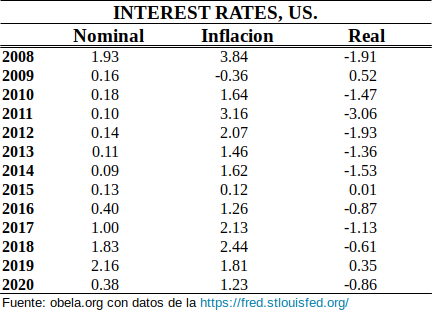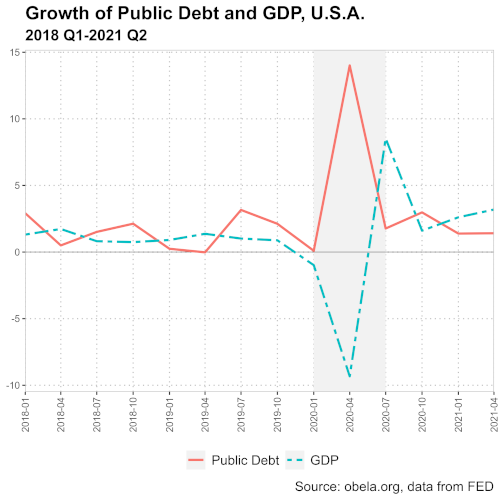Two events in September marked the world economy, the announcement of the bankruptcy of Evergrande, a Chinese holding company with giant real estate interests, and the FOMC meeting of the Fed, which was to decide whether or not to raise interest rates. We will see the complications of both and their impact on Latin America.
At the end of September 2021, the Chinese conglomerate Evergrande and two large Chinese real estate companies, Fantasia and Sinic Holdings, stopped paying interest on their debt. Some argue it might be the start of a chain of global defaults and the trigger for a new financial crisis. (read more). The financial impact was more significant on the US stock markets than on the Asian and European ones. The reason is that the US financial market is increasingly volatile because of the US structural problem, the lack of productive private returns, the fiscal and external sector deficits.
When the Chinese government restructures the real estate conglomerates, there will be very little chance of contagion to the international financial system, as there was with the collapse of Lehman Brothers in 2008, given that the international openness of the Chinese financial system is very narrow. The People's Bank of China is likely to limit the damage only to external creditors, which it will not pay first, amounting to just $20 billion out of $300 billion, all with China's public banks. The problem comes from the new deleveraging regulation of real estate companies based on assets, capital, and cash levels. With this, the Chinese government seeks to reduce the financialisation of the real estate market.
For Latin America, this is a problem because the slowdown in real estate activities will affect the pace of imports of inputs as China is the leading importer of raw materials: iron (66%), aluminium (69%) and copper (52%). The contraction of its imports will hurt prices, the volume of world trade and the exports of Mexico, Panama, Colombia, Chile and Peru, exporters of these metals.

The decision of the last meeting of the US Federal Open Market Committee (FOMC) of the US Federal Reserve. (FOMC) of the Federal Reserve (Fed), on 23 September 2021, was not to raise the Federal Funds rate and keep it in the range of 0 to 0.25%, which in real terms is -5.05%. An announcement was made of a future reduction in the pace of financial asset purchases to raise the long-term interest rates. All this will affect commodity prices adversely when it happens.
The effect on the containment of the economic crisis has worked, with severe consequences on inflation, given the level of public debt reached. There is growing inflation due to the problem of bottlenecks in final goods production, droughts and excess money supply. The question is whether they can continue this financial repression with such a negative interest rate that distorts all markets and fuels inflation or whether and at what pace they should return to positive real rates. The second decade of the 21st century is when the interest rate has been the longest negative in US history since there are records.

The financial situation of the US government raises more alarm bells than the bankruptcy of any real estate conglomerate. In the second quarter of 2020, the government debt-to-GDP ratio reached a record 135%. Between 2011 and 2020, the average rate of growth of public debt was 6.7%, while that of GDP was less than half, 3.2%. In any case, going into debt at twice the rate of GDP growth and using it primarily to import without any productive domestic counterpart indicates major structural production problems.
While the international press raves about Chinese real estate companies debt owed to Chinese public banks, the problem of US public debt levels, inflation and negative interest rates seem unnoticed. The September FOMC meeting was crucial in determining that short-term interest rates will soon rise and announcing that long-term rates are already rising. There is a long way to go to move from negative rates of more than 5% to positive rates of at least 1% and return to normality. When that happens, the weight of the debt in the federal budget will grow by more than 6.75% of GDP, which will be reflected in economic growth sooner or later. In the meantime, the stock markets continue to feast on an evanescent Western real economy while analysing China's real estate. It is the backdrop for the post-COVID weak global economic recovery.









